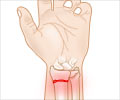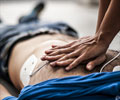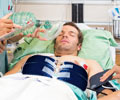Barcelona, Spain, 1 September: More widespread availability of defibrillators and education of the general public could boost survival rates fourfold amongst athletes suffering cardiac
it has been found that more widespread availability of defibrillators and education of the general public could boost survival rates fourfold amongst athletes suffering cardiac arrest.
In less than half of cases, a bystander initiated cardiopulmonary reanimation. This is crucial as survival at hospital admission is 4 times higher when CPR is attempted and 10 times greater when an electric shock is delivered.The study by a Paris hospital outlined the poor prognosis of sudden death during sport, despite the fact that efficient measures are known, but not correctly and systematically applied, across France.
Until now, studies of sudden death during sport focused on young competitive athletes, although this group represents a small percentage of sudden deaths during sport. The study is the first to collect and analyze 700 sudden deaths during sport activity in the general French population. The three sports most often involved were cycling, running and soccer, with females representing only 5% of cases. The occurrence of such a dramatic event leads to family screening in 25% of cases.
The story of a young competitive soccer player dying suddenly during a match always elicits great emotion and has a tremendous media impact. However, sudden death in young competitive athletes represents only a minority of such deaths occurring during sports activity. The story of a middle-aged man collapsing during his Sunday morning run is rarely considered, but occurs more frequently. Although pulmonary, neurological or aortic injuries may result in sudden death, the vast majority of cases are related to cardiac arrhythmias and cardiac arrest. Although regular physical activity is known to be beneficial in terms of cardiovascular health, sport, particularly when it is practised intensively by untrained individuals, may present a trigger for cardiac arrhythmias.
The group collected the data for almost 700 sudden deaths over a 4-year period. The deaths occurred during or immediately after sports activity in France. Most cases occurred during the summer, probably because of more frequent sporting activity at this time of year. The patients were generally relatively young (mean age approximately 45 years), and only a small number of subjects (<5%) had known cardiovascular diseases. The majority (>95%) of subjects were male and most deaths occurred during non-competitive sport with young competitive athletes representing only <5% of cases.
Most cases happened in open public areas (sports stadium, gymnasium, etc), with a significant number of bystanders. Despite this, 60% of subjects did not benefit from early resuscitation before the arrival of the emergency service. When a bystander did administer immediate cardiopulmonary resuscitation however, the proportion of patients admitted to hospital increased to 40% compared to 10% when no resuscitation was initiated. Moreover, the administration of an electric shock increased survival rates from 5 to 60%.
Advertisement
According to previous studies, survival rates differ strongly between French regions, ranging from 0 to 60%. In the North around the city of Lille, intensive education teaching ordinary citizens to initiate cardiopulmonary reanimation resulted in an increase in survival rates upon hospital admission to 60%.
Advertisement
Sudden death during sports activity is not uncommon. This pivotal study in the general community highlights the urgent need to educate the public regarding early intervention in cardiac arrest. In addition, the general public should be made aware of the simplicity of care for cardiac arrest, which currently depends on external massage and the availability of automatic cardioverter defibrillators. If these goals are achieved, it should be possible to dramatically reduce the burden of sports-related sudden death within the general community.
Source-Eurekalert
TAN















